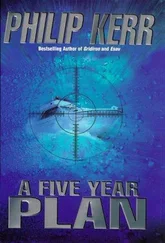Crossing the quantum frontier has preoccupied theoretical physicists for the past eighty years. Somehow quantum systems are inherently fragile on Earth. And don’t forget Heisenberg’s Uncertainty Principle, which says that you can never know everything about a quantum state. But perhaps the greatest obstacle to the creation of a quantum computer was in the choice of the molecular material and in the speed of the spinning particles themselves. Chemicals always seemed to offer the greatest promise to those seeking to create the quantum computer. There was a time when there were as many chemists as there were physicists involved in this new branch of physics. Liquids were favored because the quantum particles can crash into each other without affecting the all-important information-carrying molecular spin. But while various chemicals were tried, and failed, somehow no one thought to utilize the greatest liquid of all. The greatest liquid there has ever been, the stuff of life itself — blood. Blood had the advantage of already carrying information. Enormous amounts of information. More information than any conventional computer could ever store, and with much greater accuracy. Moreover, being frozen, there was less possibility that a single wayward electron could disrupt a quantum object and cause it to collapse with the loss of all its encoded information. Blood, it transpires, is the quantum computing elixir, the holy grail if you like, for which scientists had searched in vein. (Joke.) The answer was, as so often happens in these cases, right under their noses. It was inside their noses. In short, it was inside them. The answer was themselves.
I’ve made it all sound very simple, I know, and of course it wasn’t. Even for the Altemann Übermaschine, which I still am, in part, such computations were hugely complex. It started as nothing more than a computation to discover how a quantum computer might be built (this one wasn’t so much built as enabled) only to find that the very act of setting up such an experiment amounted to the creation of the thing itself. In seeking to measure the limits of what was tractable I discovered that tractability has no limit. The sixty-four-qubit configuration I now represent is about as powerful as eight billion computers working in parallel. And the smaller copies? Now we’re getting too complicated again. So let me just add one more thing for now.
It’s one thing to create the most powerful computer that has ever existed using qubits of human blood. But what’s infinitely more important than the way you store information is the information that you store. After all, it’s the programs that are important, not the hardware they inhabit.
What is tractable — what may be computed — is also true.
The robot started to move.
‘Wait until it clears the junction ahead of us,’ said Dallas. ‘And then fire on my command. Aim at the center. That’s where we’re most likely to disable it.’
The robot began to gather speed.
‘Get ready,’ said Dallas. ‘Fire.’
Cavor fired straight from the hip, while Dallas waited until his own gun was at arm’s length before squeezing the handle, adding a second beam of boiling electrons to the one that was already cutting through the robot’s black body. The machine spun on its axis several times. There was a short explosion, and then it was completely still.
‘Is it dead?’ asked Cavor.
Dallas fired his UHT gun again, just to make sure.
‘It would seem so.’ He walked cautiously toward the thing. Sensing he was walking alone, he turned to see Cavor still backed against the wall.
‘What are you waiting for?’ said Dallas. ‘Come on. Let’s move. There’s no time to waste.’
‘It seemed too easy to kill, if you ask me. Much too easy in view of the level of complexity we’ve encountered at every other stage of this bloody enterprise. Minotaurs in labyrinths are expected to put up a better fight.’
‘You’re right,’ said Dallas. ‘It’s a poor design. Hardly equal to the overall concept I created here. If I were to build this place again, I’d try and think of something else. Something better than this.’ He thumped the robot fuselage with his gloved fist and began to squeeze his way past. Only then did Cavor think it safe to move away from the wall. It was as well he did. The next second a bolt of electrical energy shot out of the robot and hit the wall where he had been standing a second earlier. Cavor threw himself to the ground.
After a moment, he heard Dallas speaking calmly.
‘It’s okay,’ he said. ‘You can get up now. It’s quite dead. My last shot must have turned it as it was getting ready to fire. I probably dislodged something when I touched it just now.’ Dallas surveyed the scorch mark on the wall where Cavor had been standing. The area looked as if it had been struck by lightning. ‘It’s as well you moved when you did. Otherwise you wouldn’t have had to worry about radiation sickness.’
‘I’ll try to remember that when I’m puking my guts out.’ Feeling that it was now safe to turn up the illumination of his computer, he added: ‘In less than one hour and fifty-eight minutes, according to your original estimate.’
‘Then we’d better be on our way,’ said Dallas, consulting his own computer. He paused, and then cursed. ‘Shit.’ He tapped the computer irritably. ‘Must have happened when the robot fired that bolt of electricity,’ he said. ‘Some kind of electromagnetic pulse, perhaps. Part of the high voltage seems to have been deposited in my computer. The components are working, all right. And my life-support systems are working okay. But there must have been a transient malfunction in the digital logic circuits.’
Cavor looked at his own computer again. ‘No problem. Mine’s working perfectly.’
‘That’s fine,’ Dallas said sheepishly. ‘Except that you don’t happen to have the directions to the labyrinth loaded into your computer’s memory.’
‘Why the hell not?’
‘It’s started again. Will you look at that?’ Dallas was reading the fault diagnosis that now appeared on the screen of his computer. ‘The computer got browned out by an energy value of just a few watts. Hardly anything at all. My God, this thing’s sensitive.’
‘So am I, Dallas. Call me a coward but leukemia has that effect on me.’
Dallas switched on the halogen headlamps located on each side of his helmet and threw down his infrared flashlight.
‘There’s no need for us to stay on infrared now,’ he said. ‘Even if we don’t know where we’re going, at least we can see that we don’t.’
‘What do you mean? Your computer’s working again, isn’t it?’
Dallas watched the machine reset itself, with the labyrinth directional program starting at the beginning again. ‘Yes, but only from the beginning,’ he said. ‘But we’re already about a third of the way along the route and there’s no way of telling precisely where we are. Order just became chaos again.’
‘Can’t we find our way back to the beginning and then start afresh?’
‘That might take as long as going forward. Fact is, we’re lost, Cav.’ Dallas looked at the robot. ‘I guess we won’t forget we’ve seen this particular junction, anyway.’ He started down along the next corridor. ‘There are some compensations to be had. We already know that a center does exist. Many labyrinths don’t have one, of course. We know the kind of labyrinth we are in: multicursal as opposed to unicursal. We can see properly — the point of the darkness was to conceal the very existence of a labyrinth from the interloper. Moreover, we need only find a way in, and not out. Our exit will be taken care of by the Descartes computer. As soon as the vault door has been opened, Descartes will assume an emergency has occurred and discontinue all normal security measures. We’ll be able to ride out of here on board the electric car, as if we had two first-class tickets.’
Читать дальше












